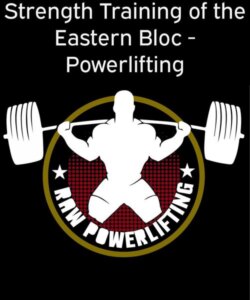Читать книгу Strength Training of the Eastern Bloc - Powerlifting - Powerlifting check - Страница 6
ОглавлениеIntensity and Specification
Training in the 90% + range, which corresponds to 1 to 3 repetitions, the training effect will be primarily neural in nature. Simply put, your nervous system will improve its overall efficiency through the maximum levels of muscle compartment. In addition, the coordination of this compartment will improve, leading to further performance improvements.
A huge part of the power used in moving a maximum weight will be neuronal in nature. In order for a program to be able to meet the specification threshold for powerlifting training, you must train frequently or often in the training cycle at the appropriate time in the 90% + range.
As we move the repeating image from top to bottom, the training effect shifts slowly from neuronal efficiency to muscle-building and then muscular endurance. This is mainly due to the fact that low repetition rates are predominantly restricted by force, while higher repetition rates are more influenced by metabolic fatigue factors such as ATP depletion, lactic acid threshold and other endurance components that are not necessarily relevant to powerlifting.
Intensity and Muscle Growth
Probably not less than 75% with only a few exceptions. Muscle building is a necessary component of sustained, consistent progress in powerlifting. You cannot push out an infinite amount of technology and general neural efficiency. At some point you need a bigger engine to drive faster and further. In a good powerlifting program, a lifter will spend time in the 75-85% intensity range. This corresponds to sets of 4-8 repetitions and builds up a larger musculature.
You get what you train. If your training consists of nothing but sets of 5, you will get a nice mix of strength and size. However, 5s are optimal neither for strength nor size. So, spending some time in this area is beneficial but spending solely on this area would make a program non-specific to powerlifting. You have to train hard.
Remember, intensity determines training effect. For powerlifting we want the training effect to be an increase in maximum power production and that involves very heavy weights.
Volume
To quote Mike Tuchscherer, “when the intensity determines the training effect, the volume determines the size of that effect”.
For example, if you expose your skin to sunlight, you will probably get a tan ("a training effect"). If you stay in the sun for a minute, you might not have done enough to provide adequate "stress." The body must not be forced to compensate because you have not overloaded it. If you stay in the sun for two hours, you will get a lot of "stress", but it will probably be too much and you will probably burn. Both are not a good result.
More importantly, there are a wide range of possibilities in the middle. If you spend 15 minutes in the sun, you will get a degree of tanning; If you spend 30 minutes in the sun, you will get another level of tanning. In this case, the time in the sun is our "volume" of stress and the level of tanning is the "size" of the training effect.
In training, we can define the volume in a variety of ways: the number of total reps in a workout, the number of sets, or we can calculate "tonnage." Tonnage is nothing more than the calculation of the total repetitions and sets that you have moved through the weight. For example, if you bend 100x5x5, then you have accumulated (100 * 5 * 5 =) 2500 kilos as total tonnage.
The more tonnage accumulated, the greater the training effect will be. But that also determines the longer you have to wait before you can train again. As with everyone, there is an optimal dose-response relationship.
Introduction to Frequency
Frequency simply means how often each discipline is trained. For example, if you work bench press 3 times a week, your frequency for this exercise is exactly 3.
Frequency is very important in terms of recreation management. If you train too often and do not recover enough, then you get into overtraining. If you do not train enough, the body will not make any adjustments and you will not make any progress here either. With both mistakes, the performance will suffer, so it is important to have good time coordination for these two processes.
The goal of temporal coordination should be to set another stimulus (stress) at the right time, so that the body must readjust and progress.
